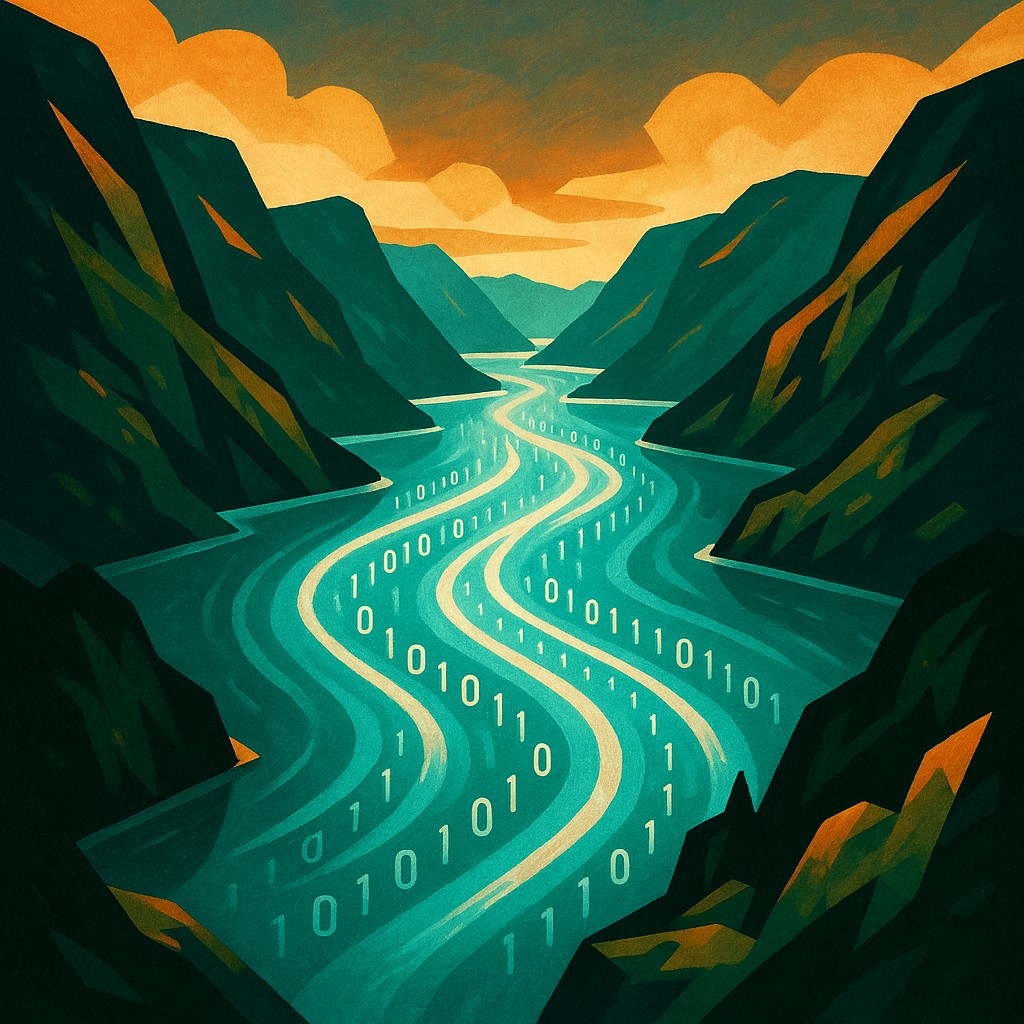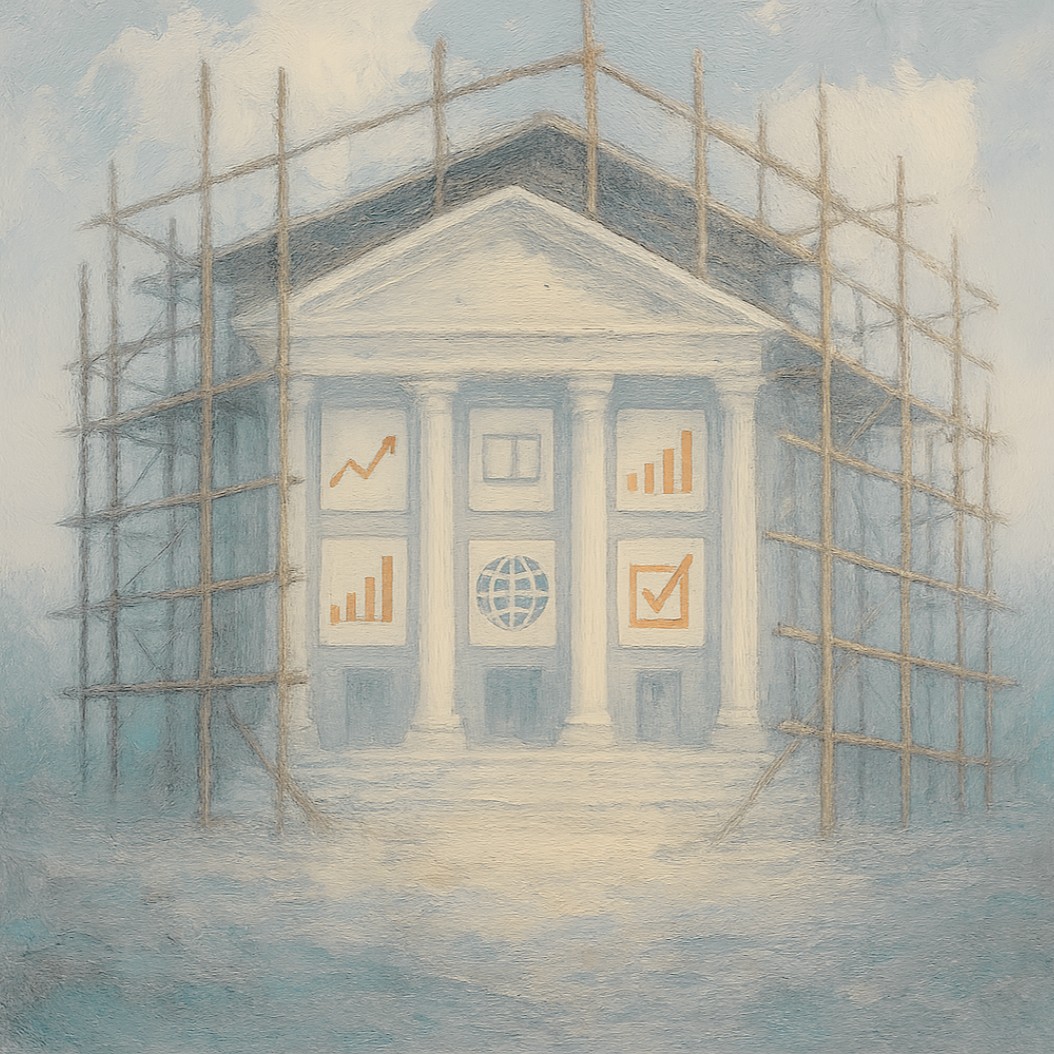A sea of data
Norway is in the process of building a digital twin of the ocean, but we use it primarily for reporting, not for innovation.

Ki-generated illustration from Sora.
Main moments
Norway has always been a sea country. For more than a thousand years, we have built values on what we do best — understanding, harvesting and managing the ocean. Now we are again at a turning point, but this time it's not about fishing lessons or oil platforms. It's all about data.
We use only a fraction of the potential that lies beneath the surface. We have the world's most digitized ocean -- but not the world's most data-driven decisions.
World-class digital ocean
Today, more than 7000 sensors are installed along the Norwegian coast, on platforms, ships, pipelines and fish farms. They measure everything from temperature, salt content and current conditions to fish movement patterns, oxygen uptake and health status.
In modern cages, each individual salmon is monitored with cameras and biometric sensors connected to the 5G network. One farming facility can produce several terabytes of data a day.
This forms an ecosystem of biological, meteorological and industrial data already used for climate monitoring, animal welfare and resource management. But far from on the scale we could.
According to Sinteg, more than 50 petabytes of ocean data are collected annually from Norwegian sensors, but less than 10 percent are actively used in operations and decision support.
Genetic engineering meets computer technology
In a recent note from Long-Term, Sigrid Bratlie and Albert Didriksen show how genetic engineering can be used to improve both the environment and fish welfare.
They write, among other things, about Omega-3-enriched rapeseed oil, which can reduce the need for wild fish in feed. And about gene-edited sterile salmon, which protects wild salmon and improves animal welfare in the cages.
Such solutions show how biotechnology and computer technology merge. When we modify or measure genetic expression, we create vast amounts of data -- and thus new possibilities for precise analysis, modeling and artificial intelligence.
Norway has a special advantage here. We can explore new methods in fish health, soil and microbiology without stepping into the legal and ethical challenges that concern research on human genetics.
It gives us a safe space for responsible experimentation and an opportunity to build a whole new industry based on biological data.
An ecosystem of sensors
Above and below the surface of the sea there is already a dense digital network. Underwater drones, fiber cables, seismic measurements and observation platforms such as BarentsWatch, Norce OceanLab and Digital Ocean Space give us an increasingly holistic picture of the ocean.
The data is used to follow everything from CO! 2emissions and biodiversity to current conditions and contingency. Norway is in the process of building a digital twin of the ocean, but we use it primarily for reporting, not for innovation.
We are among the top ten countries in the world on ocean technology, but the gap between knowledge and use is growing. Caution is needed, but standstill is expensive.
We need a new model of development. Not just a precautionary principle, but a pre-know system, in which we test safely, learn quickly and share openly.
Aquaculture is an ideal pilot: an industry with a measurement infrastructure, high technological maturity and a real willingness for collaboration between research, industry and management.
Putting the data to use
The value of Norwegian ocean data is estimated at around NOK 10 billion a year, mainly through research and monitoring. If we couple this data with genetics and artificial intelligence, value creation could quintuple within ten years -- through lower mortality, better fish health, more efficient resource use and more precise environmental understanding.
This is not a question of gathering more data, but of using what we already have. Norway has infrastructure, trust and expertise. The challenge is to put the data into the system -- and into use.
The ocean is full of biological and digital signals that can help us understand and improve the interaction between nature and technology.
Norway can become the country that manages nature through data — and builds the next generation of value creation on insight, precision and accountability.
More from Langsikt

AI threats in the short and long term
The fact that KI is causing serious problems today does not mean that we can dismiss the threats of the future.

Data centers aren't the problem -- poor prioritization is
Data centers are portrayed as a threat to Norwegian industry and the power system. The figures show that the risks lie in unclear frameworks, not in the data centres themselves.

The world's top AI scientist warns of the dangers of artificial intelligence. Dismissing him is risky.
He has outlined one of the best solution proposals so far.

Norway needs a new national project
Norway and Europe must find a third way in the shadow of China and the United States.